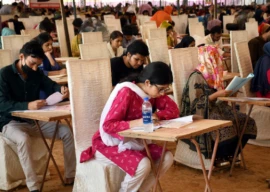
One says it wants to send its young people to be Silk Road "super connectors", while a second is pitching to become a new home for foreign consulates. Another wants to build a folk museum to commemorate Beijing's overseas push.
Chinese firms eye Pakistan amid Beijing's 'Silk Road' splurge
The plan, officially the 'One Belt, One Road' (OBOR) project, has so far seen billions of dollars pledged overseas to countries such as Pakistan and Kazakhstan, in a drive to develop trade and build infrastructure along land and sea routes between the two continents.
At home, it is stoking a frenzy of one-upmanship among provinces keen to catch Xi's eye and find new drivers for growth in their patch as the economy slows.
While official plans published in 2015 only list 18 provinces as areas key to the plan, over 30 of China's territories now say they have an OBOR strategy.
At the annual meeting of China's rubber-stamp parliament in Beijing this week, delegates from all attending provinces trumpeted their support for the initiative during meetings.
"Our party secretary, mayor, vice-mayor have all visited One Belt One Road countries like Poland and the Czech Republic, even parts of the Russian Federation like Tatarstan," Tang Limin, secretary-general of central Sichuan province said after addressing delegates at a meeting.
Silk Road Expo: ‘One belt, one road’ has reinvigorated ties with China: Rashid
It didn't matter that the government didn't identify Sichuan as key to the plan two years ago, Tang said.
"We have a lot of cooperation projects that come under One Belt One Road," he said.
Aligning such projects with Xi's vision has been aided by the loose definition of OBOR. Beijing has provided some guidelines of where it wants the initiative to focus, such as heavy infrastructure investment, but has left much of it open to interpretation.
Cultural exchanges with other countries, the formation of the Asian Investment Infrastructure Bank, and overseas acquisitions by Chinese firms have all been described by local media as part of the OBOR project.
Delegates to the parliament have embraced that kind of flexibility.
"We have people who can be 'super-connectors and super partners'," said Chan Yung, the Hong Kong deputy to the National People's Congress, when asked how the autonomously governed city plans to contribute to the initiative.
China has so far poured $14b into CPEC projects
"Hong Kong's youth are very open... As long as they're willing to fork out 1-3 years to travel the One Belt One Road routes and stay in a country for 1-2 years, they can become experts."
Bai Hongzhan, a delegate from Henan in central China, proposed that the provincial capital Zhengzhou should be developed into a key node on the route where foreign consulates could be persuaded to set up a base.
The province of Shaanxi, home to China's historic Terracotta Army, is weighing up a proposal for a Silk Road Chinese Folk Culture corridor, with folk museums, memorial halls and gardens to pay tribute to the initiative, documents show.
Plans for how to participate in "One Belt, One Road" have not just been drafted by the provincial government, but companies and other entities.
In the coastal province of Jiangsu, the fervour is not restricted to the provincial authority but reaches down to lower tiers of government and corporate China, said Yan Lijuan, a delegate from the province and top executive at XCMG Construction Machinery.
"One Belt, One Road is extremely important to every city in Jiangsu, every company and industry."

1726117332-0/Megan-Thee-Stallion-(1)1726117332-0-165x106.webp)





















COMMENTS
Comments are moderated and generally will be posted if they are on-topic and not abusive.
For more information, please see our Comments FAQ